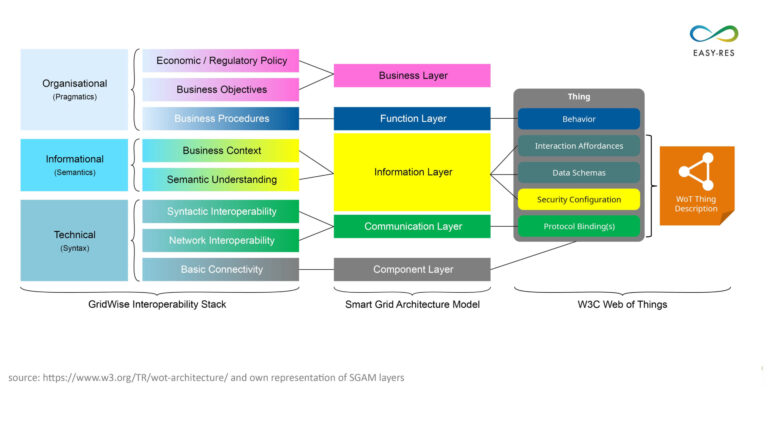Result description
To maximize the benefits of distributed (renewable) energy resources, they must be able to interact with their environment, the high-level control system and among themselves in order to exchange and process data. EASY-RES uses the Web of Things (WoT) architecture to overcome the interoperability challenges in such a heterogeneous system by providing a unified and vendor-neutral way of communication.
In a future power system, converter-interfaced generators from different vendors will provide Ancillary Services (AS) such as inertia response, primary frequency control, voltage regulation or contribution to fault current. In order to orchestrate those resources in a grid optimal way, their service provisioning needs to be identified. This does not only include the electrical reaction (e.g. how fast and for how long additional power injection is provided in case of frequency change) but also the communication means to collect this information on possible service provisioning, as well as how these services can be activated for a certain time with given parameters. The representation of the distributed generators is therefore realized with the W3C Web of Things architecture that provides the necessary definitions on communication (e.g. communication via ModBus/TCP or MQTT) and information level (e.g. how much of a certain ancillary service can be provided at which time and how it can be activated).
Addressing target audiences and expressing needs
- Help in technical expertise
- Collaboration
As interoperability involves all vendors of converter-interfaced generators in a heterogeneous system, a collaboration with those to fine-tune the interface on both communication (e.g. testing different communication protocols) and information level (e.g. testing our envisioned API abstraction) would be beneficial.
- Research and Technology Organisations
- Academia/ Universities
R&D, Technology and Innovation aspects
Result submitted to Horizon Results Platform by UNIVERSIDAD DE SEVILLA

